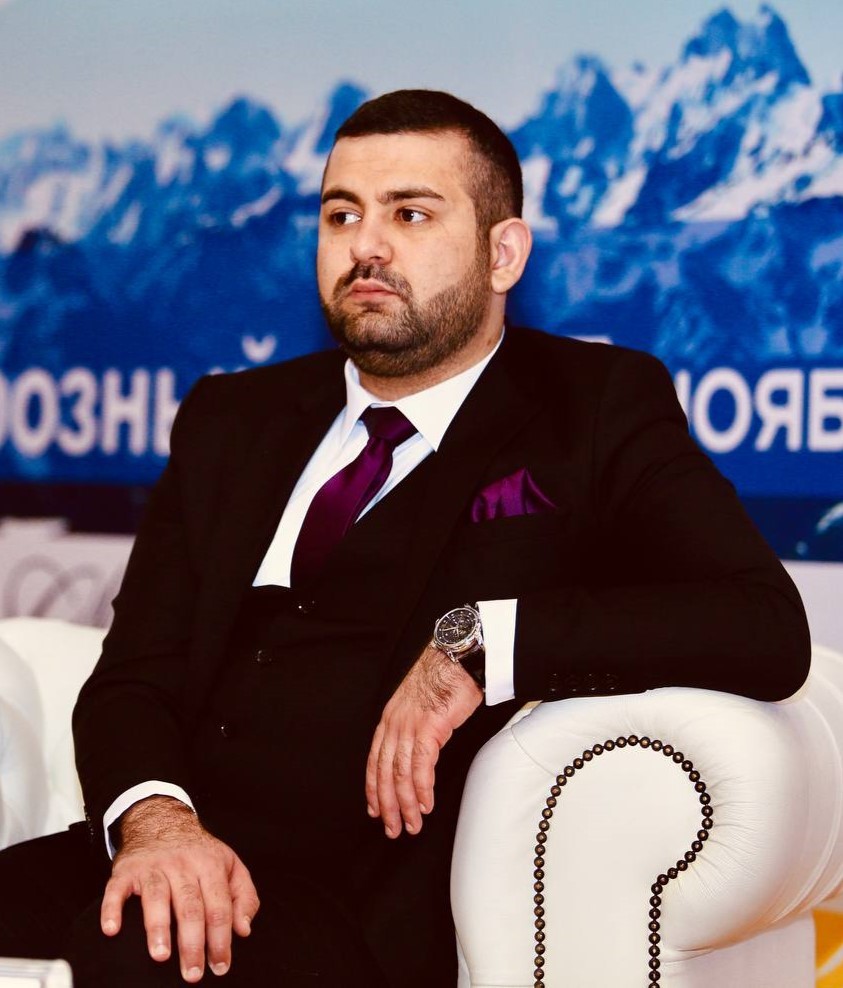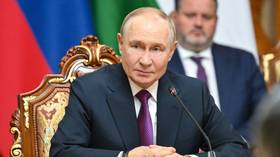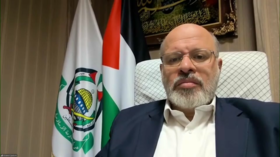A new Iran-Israel war is just a matter of time
Both internal and external factors are driving up pressure on Tehran, and its enemies see it as critically vulnerable

ByMurad Sadygzade, President of the Middle East Studies Center, Visiting Lecturer, HSE University (Moscow).
Telegram

FILE PHOTO: Streaks of light from Iranian ballistic missiles are seen in the night sky, as Iran resumes its retaliatory strikes against Israel, June 15, 2025. © Wisam Hashlamoun / Anadolu via Getty Images
The specter of a new war in the Middle East continues to loom, with Iran at its potential center. Pressure from the US, Israel, and several European countries is steadily increasing. This is reflected both in the tightening of sanctions and the growing military presence across the region. Western governments accuse Tehran of supporting armed groups, destabilizing neighboring states, and advancing its nuclear program. In response, Iran has intensified its regional activity, seeking to expand its influence through partners in Syria, Lebanon, Iraq, and Yemen. Tensions are now gradually spilling beyond the realm of diplomacy, edging closer to open threats.
Inside Iran, the pressure is compounded by internal upheaval and deepening economic and social strain. Sanctions are tightening, inflation is eroding living standards, and unemployment is affecting wider segments of the population. Discontent is rising, particularly among young people and the urban middle class. Against this backdrop, the government is sharpening its foreign policy rhetoric and presenting itself as resilient and ready to resist external pressure. Growing numbers of analysts are now predicting a second round of open conflict between Iran and Israel.
To understand what Iran may face in the near future, one must begin by examining the internal landscape before turning to external dynamics. Following the end of the recent 12-day conflict, the Iranian authorities launched a broad – though largely undisclosed – campaign to purge state institutions and other structures of suspected foreign influence. The effort targeted individuals believed to have links to hostile foreign actors and ties to foreign intelligence agencies.
While most of these efforts remained behind closed doors, a few high-profile cases were deliberately brought into the public eye. The arrests did not reach the core of the state apparatus, but among the detainees were individuals reportedly found to have long-standing connections with Western intelligence and organizations associated with Israel. The most prominent case involved the detention of 122 people allegedly tasked by exiled opposition figure Reza Pahlavi with inciting unrest in Tehran at the height of the fighting.
On August 3, Iran’s Supreme National Security Council announced the creation of a new strategic body known as the Defense Council. It will be chaired by the president and will include the head of the judiciary, the speaker of parliament, military commanders, and key ministers. The council’s mandate is to develop national defense plans, enhance the operational capacity of the armed forces, and formulate a long-term defense strategy in light of the ongoing regional volatility.

Read more
Iran suspends all cooperation with atomic energy watchdog
Two days later, President Masoud Pezeshkian appointed Ali Larijani as the new secretary of the Supreme National Security Council. Larijani, a senior adviser to Supreme Leader Ali Khamenei, is a particularly notable figure in this context. In late July, he visited Moscow and met with top Russian officials, including the president. The timing of his appointment gives that diplomatic visit added significance.
Larijani is not merely a technocrat or bureaucratic functionary. He is one of the most influential figures in Iran’s political establishment, with close ties to the so-called ‘Iraqi group’ – a faction within the Iranian elite that enjoys strong support within the corridors of power and has traditionally aligned itself with the supreme leader. His appointment signals not only internal consolidation but also a shift toward long-range strategic planning in anticipation of further escalation.
Other signs suggest that the prospect of renewed conflict is being taken seriously. In early August, Mohammad Mohammadi, an adviser to the speaker of parliament, declared that Iran does not view the current truce as a permanent settlement but rather as a temporary pause in hostilities.
The message was echoed by Defense Minister Aziz Nasirzadeh, who stated that Iran had refrained from using its most advanced weapons during the 12-day conflict. These include Qassem Basir precision-guided missiles and maneuverable warhead systems. He noted that the production of these systems has continued uninterrupted and that Iran gained valuable combat experience during the confrontation, effectively stress-testing its capabilities against a serious adversary. If attacked again, he warned, the response will be both unexpected and forceful.
The possibility of war is no longer discussed in whispers. In one of his speeches in August, Iranian parliamentary speaker Mohammad Bagher Ghalibaf stated plainly that war could break out and that the country must be prepared. Strength, he said, is essential. His remarks reinforced what has already become clear – that the military option is being taken seriously at the highest levels of power.
At the same time, skepticism toward any prospect of dialogue with the West is growing louder within Iran’s political and public discourse. As pressure from the US and European countries intensifies, the Iranian parliament has released details of a draft plan that calls for withdrawal from the Nuclear Non-Proliferation Treaty and the Additional Protocol which gives the International Atomic Energy Agency (IAEA) inspection authority. One of the MPs, Hojjatoleslam Haji Deligani, described this move as a direct response to the potential activation of the snapback mechanism – the automatic reimposition of sanctions as stipulated by the JCPOA (the 2015 Iran nuclear deal). According to him, the plan will be debated in parliament the following week.
The published text outlines a complete withdrawal from the NPT and the Additional Protocol, along with a halt to all negotiations with the US and the three European JCPOA signatories – the UK, France, and Germany. If the plan is approved, cooperation with the IAEA under existing control mechanisms will be suspended. Both the Foreign Ministry and Iran’s Atomic Energy Organization will be required to report back to parliament within a week on the progress of implementation.

Read more
Israel signaling to Iran via Russia – Putin
Tehran’s hardening position is driven by the belief that European states are increasingly aligning themselves with Washington and West Jerusalem. Tehran’s Friday Prayer leader, Hojjatoleslam Haj Ali Akbari, recently declared that the activation of snapback sanctions was the result of pressure from Washington and the “Zionist lobby.” In his words, Western Europe has effectively become a satellite of the Israeli regime and has lost its autonomy in foreign policy decision-making.
A similarly uncompromising stance was voiced by Iran’s acting foreign minister, Abbas Araghchi, in an interview with the Financial Times. He stressed that many Iranians see dialogue with the US as futile and have urged the diplomatic leadership not to waste time or political capital on negotiations that are unlikely to produce fair or equitable results.
Meanwhile, other developments in the media space suggest growing efforts to undermine Iran’s external partnerships, particularly with key allies. One of the most controversial episodes involved a public statement by Mohammad Sadr, a member of the Expediency Council, who alleged that Russia had shared intelligence with Israel regarding Iran’s air defense systems. He argued that this revealed the strategic partnership with Moscow to be hollow and warned that counting on Russia in a moment of crisis, especially in the event of a confrontation with the US, would be a grave mistake.
The remarks provoked a strong reaction and quickly became a source of speculation aimed at weakening the relationship between Tehran and Moscow. Yet within days, Mohammad Sadr submitted his resignation, which appeared to be the result of pressure from political factions intent on preserving unity in the face of escalating external threats.
Even so, the fact that such statements emerged at all is telling. They reflect the growing polarization within Iran’s elite. Divisions among various factions in power are becoming increasingly visible. The country’s top leadership seems acutely aware of this and is taking steps to consolidate the political system. In a time of potential crisis, the emphasis has shifted toward reinforcing the chain of command and ensuring policy coherence. This has meant sidelining officials and technocrats whose views diverge from the central leadership’s strategic direction.
As the internal picture comes into sharper focus, it becomes clear that Iran’s mounting challenges are not confined to political or foreign policy arenas. The social and economic situation continues to deteriorate. Living standards are falling, inflation is surging, unemployment is spreading, and access to basic public services is becoming more fragile.

Read more
If Trump wants meaningful talks, he must hold Netanyahu accountable – Hamas representative in Iran
The energy sector, long a cornerstone of the country’s stability, is also under growing strain. Even major cities are now experiencing power and gas outages, fueling additional public frustration and eroding confidence in the government’s ability to meet the population’s basic needs. A worsening water crisis has added another layer of urgency. In Tehran and several provinces, water shortages have reached critical levels, driven both by natural conditions and by the aging, inadequate infrastructure that has struggled to keep pace with demand.
All of this creates an extremely fragile internal environment in which the Iranian leadership is compelled to act with determination. Preserving stability under such conditions demands more than just political mobilization. It requires urgent institutional and economic measures. The longer the accumulated crisis persists, the more pressing the question becomes: Can the state continue to maintain control and prevent future outbreaks of domestic unrest?
Attention must also turn to the external dynamics of recent weeks, which are no less troubling than the internal challenges facing Iran. Amid Israel’s ongoing ground operation in Gaza, the continued expansion of settlements in the West Bank, and the deepening humanitarian catastrophe in Palestinian territories, critical voices in Europe have grown louder. Yet, as political reality consistently shows, these criticisms remain largely declarative. If open escalation were to erupt once again between Israel and Iran, the key question would be: Who would the Western powers support? Would European governments be willing to publicly pressure Israel over the Palestinian situation in the midst of a confrontation with Iran?
The likely answer is already clear. Despite growing disapproval of Israeli policy toward the Palestinians, a direct clash would almost certainly lead to consolidated Western support for Israel. This would not only stem from established diplomatic alignments, but also from a shared strategic and ideological worldview – especially at a time when Iran is increasingly perceived as a challenger to the Western-led order. Israel, in this scenario, could count not only on American backing, but also on the political and moral support of most of its Western partners.
This geopolitical reality is well understood in Israel. The leadership closely monitors developments within Iran – the signs of instability, the divisions within the elite, and the growing weight of socioeconomic pressure. These observations are feeding into a strategic narrative within Israel that Iran is nearing a systemic crisis, and that a relatively limited amount of external pressure could be enough to trigger the collapse of the Islamic Republic’s political architecture. While this assessment may be overstated, it is actively promoted in Washington, where Israeli strategists are working to persuade their American counterparts of the need to maintain a hardline posture toward Iran – potentially even in support of a military option.
Another layer to this equation is the way Iran is increasingly viewed through the lens of broader global competition, particularly the growing rivalry between the US and China. Iran is no longer seen solely as a regional actor, but rather as part of a wider strategic chessboard where the interests of two global powers intersect. From Washington’s perspective, weakening Iran serves not only to contain a threat to Israel or the Gulf monarchies, but also to undermine a key partner of China – a state that is expanding its political and economic reach across Eurasia and the Middle East. In this sense, the Iranian question has moved beyond the regional stage and become a part of the emerging global contest over influence in the post-American era.
Taken together, Iran’s internal and external dynamics point to a high probability of renewed military confrontation between it and Israel. Domestically, political divisions, socioeconomic pressure, and institutional fragility are driving the leadership toward greater centralization and mobilization. At the same time, the external environment is turning increasingly hostile.
The current balance of threats, expectations, and strategic calculations has created a precarious situation in which even a minor incident could serve as a trigger for escalation. Both Tehran and West Jerusalem are operating under a logic of preemptive defense, based on the assumption that their adversary is nearing a critical point of vulnerability. In this environment, the Middle East may well find itself on the verge of a large-scale conflict in the coming months – a conflict whose consequences are likely to extend far beyond a bilateral confrontation.
rt.com |









